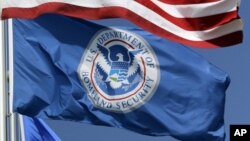About 1 percent of visitors who arrived in the country by air or sea remained in the country last year after they were supposed to leave, the U.S. Department of Homeland Security said.
According to data the department released Tuesday, about 45 million of those visitors were due to leave at some point in the year ending September 30, and DHS said it confirmed that all but 416,500 had exited the country. Another 66,500 people stayed past their leave date, but later left the U.S.
The visitors include business and pleasure travelers who either had visas for a stated period, or visited from a country where the U.S. does not require a visa but authorizes visits for a certain amount of time.
Together, they represented 85 percent of all visitors who came by sea or air.
Visa Waiver Program
Rates of those overstaying their welcome were lowest among the 38 countries that are part of the Visa Waiver Program. Together, the overstay rate was 0.65 percent and no country had a rate above 2.5 percent.
The other 154 countries in the data set had a collective overstay rate of 1.6 percent, and 10 of them exceeded 10 percent.
But the biggest offenders were countries that had relatively few visitors to the U.S., while those with larger visitor populations in the hundreds of thousands mostly had rates under 2 percent.
DHS identified two major holes in the data that prevent a more comprehensive analysis of how many people overstay their visas in the United States.
The first is the lack of data regarding those who enter the country by land from Canada and Mexico.
There were more than 200 million visitors that way last year, and the department says it is working on ways to include them in future data sets.
Types of visas
The other hole is in the types of visas included. While the data does hit what are by far the largest categories, DHS says it wants to include more, specifically the F, M and J visas given to visiting students and teachers.
The issue of who is allowed into the country gained greater focus last year as some called for increasing the number of Syrian refugees taken in by the U.S. and others argued for greater restrictions because of fears terrorists could easily slip into the country.
Congress enacted new rules in December tightening the waiver program. Anyone with citizenship from Iran, Iraq, Syria or Sudan, or those who traveled to one of those countries in the past five years, is not eligible for a waiver and must get a visa to enter the U.S.











